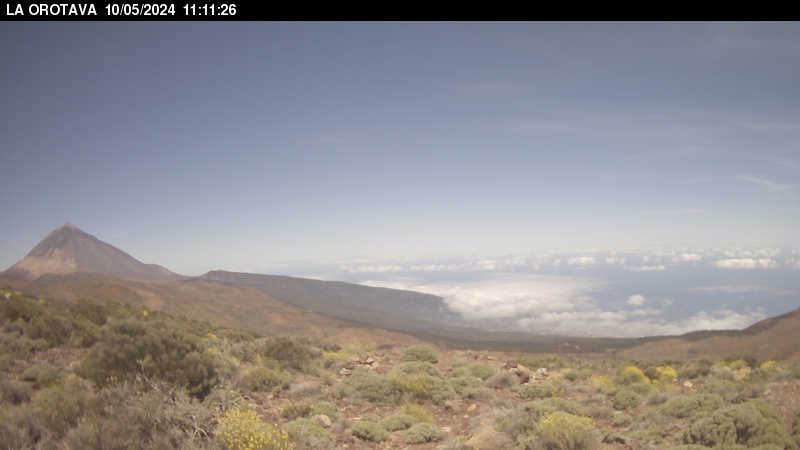Centro de visitantes Cañada Blanca
Accessing the Park from the south, you will find the Cañada Blanca Visitor Center, inaugurated in 2022. Located in front of Roques de García, and next to the Parador de Turismo Cañadas del Teide.
You will learn about the evolution of the different ways of life in Las Cañadas, from prehistory to modern times. In addition, it reserves a space for astronomy, atmospheric, geological and volcanological research.
It has a projection room, audiovisual productions, and a viewing terrace with an interpretive model of the landscape.
Open Monday to Sunday from 9:00 a.m. to 4:00 p.m.
Closed: December 25, January 1 and 6.
If you wish to arrange a group visit, contact the visitor center in advance: 922 373 391.
LOCATION
Jardín botánico en el Portillo
With a surface area of 4 hectares, specimens produced in the nursery have been introduced little by little into this garden with the aim of integrating them into the existing vegetation. The public is offered the possibility of contemplating the plant species that grow in the high Canarian mountains, around 75% species, many of which are endemic to the island of Tenerife.
Visiting hours: All the year
Visit price: Free
LOCATION
Museo Etnográfico Juan Évora
Juan Évora was the last inhabitant of Las Cañadas who preserved the traditional way of life. The house in which he lived, located at the intersection of Boca Tauce, near the intersection of the TF-21 and TF-38 roads, has been rehabilitated as an information point.
It also has an exhibition about the ancient lifestyle of the shepherds in Las Cañadas.
Open from 9:00 a.m. to 3:45 p.m. every day of the week.
LOCATION

 Español
Español Français
Français





